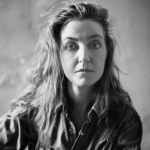

I think he liked things when they were coming apart, when they were strange.ĪRT BEAT: You draw some nice connections about time in the old world Muybridge came from, and the time that he prefigured. And a splash of water arching up from the bucket like a leaping serpent is not really something anybody had seen in painting, and although you kind of almost glimpse it with your eyes, you don’t really hold that vision. He’s ok with things, a lot of things, other photographers then were not so excited about, like the way that water looks very strange when you photograph it in a slow exposure.Īnd then after he speeds up photography, he’s also ok with the very strange way that water and human beings look captured in all these odd positions nobody had ever seen before. We call a graceful, harmonious work “composed” and Muybridge’s work is “decomposed” or “discomposed” - things are coming apart and you see the seams of reality, of time in them. His images aspired to a kind of classical calm and composure. But Watkins was a superlative example of a conventional photographer.

REBECCA SOLNIT: Well, one way to frame it is that he is often compared to his great contemporary in California, the photographer Carleton Watkins, who was born the same year, worked in many of the same places such as Yosemite National Park and San Francisco, with the same formats of mammoth plate prints and panoramas and stereoscopes and things like that.

She is also a contributor to the exhibition catalog for “Helios: Eadweard Muybridge and a Time of Change.”Īs part of our feature on Muybridge, Art Beat talked to Solnit about uncovering the seams of reality and time in photography, the economy of images we find on the internet today, image bombardment in advertising, and why we still love to take and show each other photos after all these years.Ī recipient of a Guggenheim Fellowship, Solnit is also the author of “Wanderlust: A History of Walking” and “A Field Guide to Getting Lost.”ĪRT BEAT: In your essay for the Corcoran show, “Helios: Eadweard Muybridge in a Time of Change,” you call the world in Muybridge’s photographs “all but discomposed.” Can you explain what you meant by that?

Rebecca Solnit is the author of “River of Shadows: Eadweard Muybridge and the Technological Wild West,” which won the 2003 National Book Award for Criticism.


 0 kommentar(er)
0 kommentar(er)
